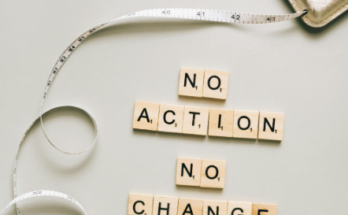Let’s get one thing straight: you don’t have to starve to lose weight. If you’ve ever suffered through crash diets, skipped meals, or cut out entire food groups only to gain all the weight back, you’re not alone—and you’ve been misled. Sustainable weight loss is not about deprivation. It’s about smart, consistent choices that work with your body, not against it.
This ultimate guide will show you how to lose weight in a healthy, lasting way—without starving, suffering, or obsessing. Whether you’re just starting or restarting your journey, this is your blueprint for real transformation.
Click here
1. Forget Quick Fixes—Think Long-Term
Quick fixes might give you fast results, but they usually end with burnout, rebound weight gain, and frustration. Sustainable weight loss focuses on lifestyle over limitation.
Why This Works:
- You maintain muscle and metabolism.
- You build habits that stick.
- You avoid the binge-restrict cycle.
Aim to lose 1–2 pounds per week, a pace that’s more manageable, realistic, and long-lasting.
2. Know Your Numbers: Calories and TDEE
At the heart of weight loss is the calorie deficit—burning more calories than you consume. But too large a deficit slows your metabolism and makes you miserable.
Find Your TDEE (Total Daily Energy Expenditure):
Use an online TDEE calculator to estimate how many calories your body needs. Then, subtract 10–20% from that number to create a healthy deficit.
Pro tip: Never go below 1,200 calories for women or 1,500 for men without medical supervision. Your body needs fuel to function.
3. Eat More, Not Less—Of the Right Foods
One of the biggest weight loss secrets? You can eat more volume and still lose fat—if you choose nutrient-dense foods.
Fill Your Plate With:
- Lean Proteins: chicken, turkey, tofu, fish, Greek yogurt
- High-Fiber Veggies: broccoli, spinach, carrots, zucchini
- Whole Grains: oats, quinoa, brown rice, whole wheat pasta
- Healthy Fats: avocado, nuts, seeds, olive oil
- Hydration: 2–3 liters of water daily
The key is volume eating—filling up on foods that are low in calories but high in nutrients.
4. Build a Balanced Meal Plan (Without Starving)
Skipping meals might save you calories short-term, but it backfires later with cravings, overeating, and fatigue. Instead, aim for 3 balanced meals and 1–2 snacks each day.
Structure Your Meals:
- Protein: 25–40g per meal
- Fiber: 5–10g per meal
- Healthy Fat: 10–20g per meal
- Carbs: 20–40g per meal (depending on your needs)
This structure helps regulate blood sugar, keep you full, and avoid the energy crashes that lead to overeating.
5. Prioritize Protein (It’s the Fat-Loss MVP)
Protein helps you lose fat while preserving muscle. It also keeps you full and burns more calories during digestion than carbs or fat.
Protein Targets:
- 0.8–1.2 grams per pound of body weight
- Spread evenly across meals and snacks
Add protein to every meal—even breakfast and snacks. Hard-boiled eggs, protein shakes, Greek yogurt, and cottage cheese are great go-tos.
6. Strength Train to Transform Your Body
Weight loss isn’t just about losing fat—it’s about reshaping your body. Strength training helps you tone, tighten, and preserve muscle while burning calories long after your workout ends.
Start With:
- 2–4 days per week
- Full-body routines focusing on compound lifts (squats, rows, push-ups, deadlifts)
- Progressively adding weight or reps
More muscle = a higher resting metabolism = easier fat loss.
7. Stay Active Throughout the Day (NEAT Matters)
You don’t have to live at the gym to burn calories. Non-Exercise Activity Thermogenesis (NEAT)—the calories you burn doing everything but exercise—can be a game-changer.
Ways to Boost NEAT:
- Take walking breaks at work
- Park farther from entrances
- Use stairs instead of elevators
- Clean your house more energetically
- Play with your kids or pets
Aim for 8,000–10,000 steps per day to increase your overall calorie burn naturally.
8. Sleep and Stress: The Overlooked Weight Loss Tools
Even with perfect eating and exercise, poor sleep and high stress can sabotage your progress. They increase cortisol, which promotes fat storage and ramps up hunger.
Tips to Sleep and De-Stress:
- Aim for 7–9 hours of sleep per night
- Use meditation apps like Calm or Headspace
- Journal your thoughts before bed
- Do yoga, stretching, or deep breathing
- Set boundaries to protect your time and energy
A rested, calm body burns fat more efficiently.
9. Don’t Demonize Carbs or Fats
Carbs and fats are not the enemy. In fact, they’re essential for hormone health, brain function, and energy.
Good Carb Sources:
- Fruits, veggies, sweet potatoes, oats, brown rice
Good Fat Sources:
- Olive oil, nuts, chia seeds, fatty fish, avocado
Instead of eliminating food groups, practice moderation and balance.
10. Track Progress—But Don’t Obsess Over the Scale
The scale is just one tool—and it doesn’t show body composition changes. You might be losing inches, fat, and inflammation even if the number isn’t moving.
Better Ways to Track Progress:
- Take weekly progress photos
- Measure your waist, hips, and thighs
- Track strength gains in workouts
- Notice how your clothes fit
- Record mood, energy, and digestion
Celebrate non-scale victories—they count too!
Conclusion: You Can Lose Weight Without Starving Yourself
You don’t need to suffer or deprive yourself to lose fat. You need structure, consistency, and a sustainable plan that fits your lifestyle. The more you nourish your body—not punish it—the more it will work with you to achieve your goals.
Sustainable weight loss isn’t a 30-day challenge—it’s a lifelong investment in your health, happiness, and confidence.
Read more.





